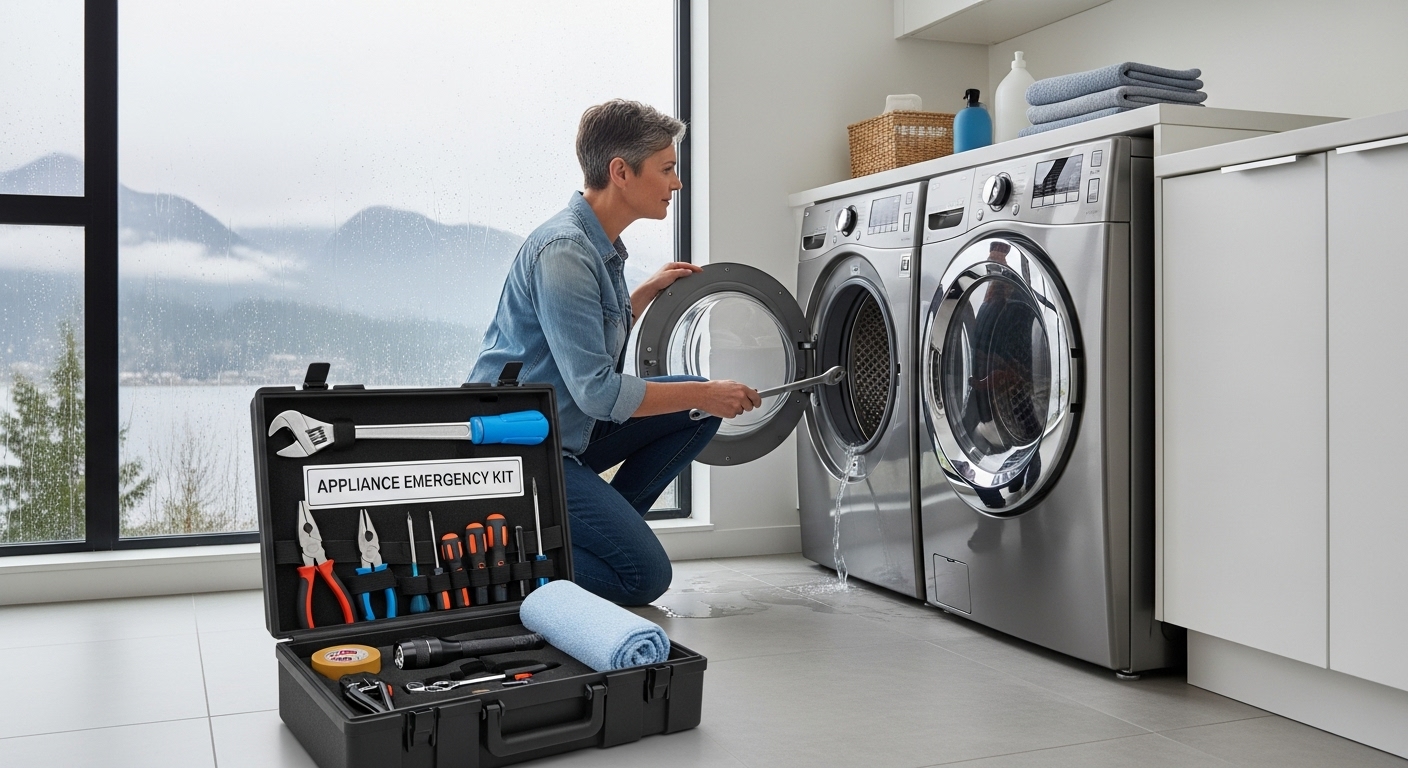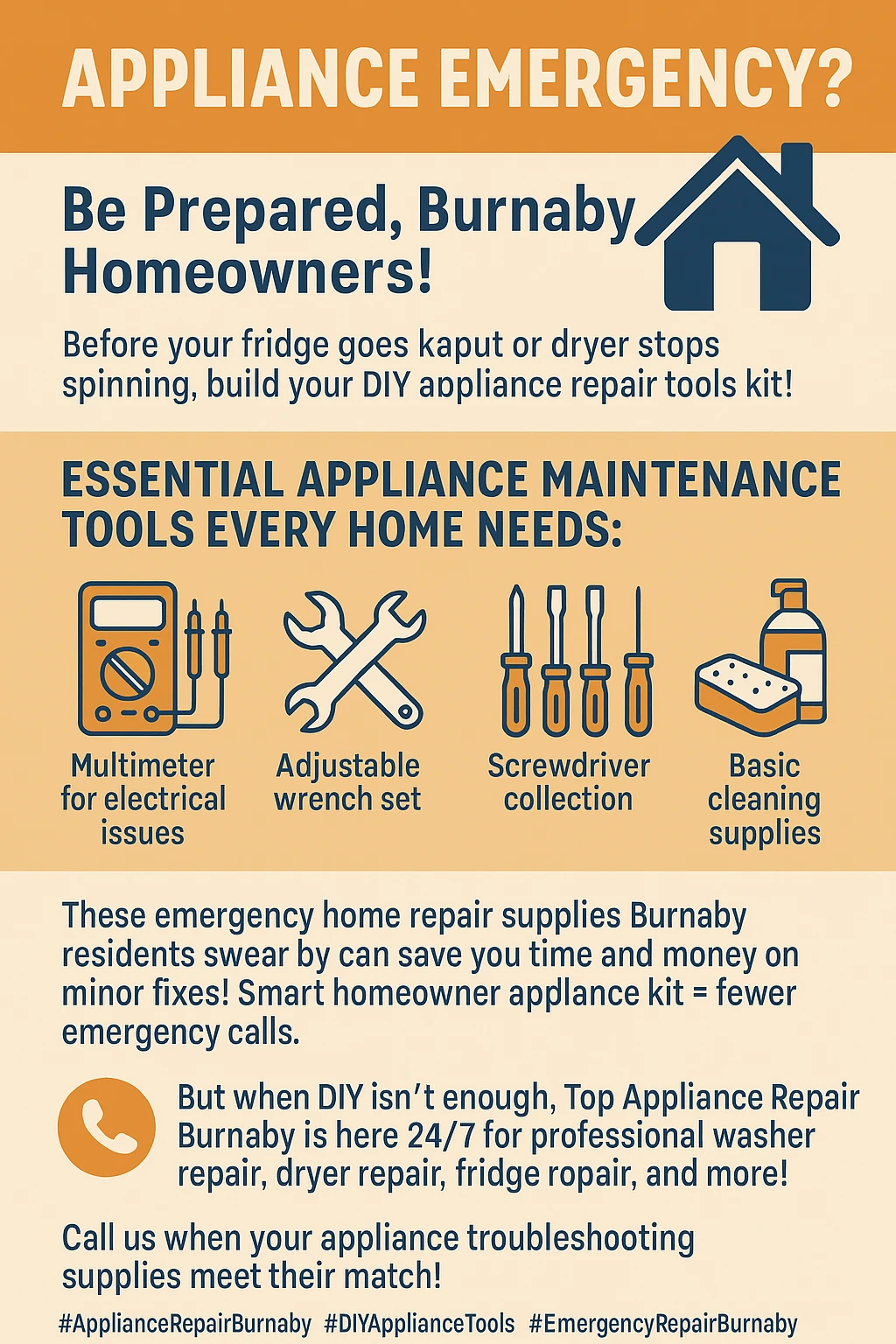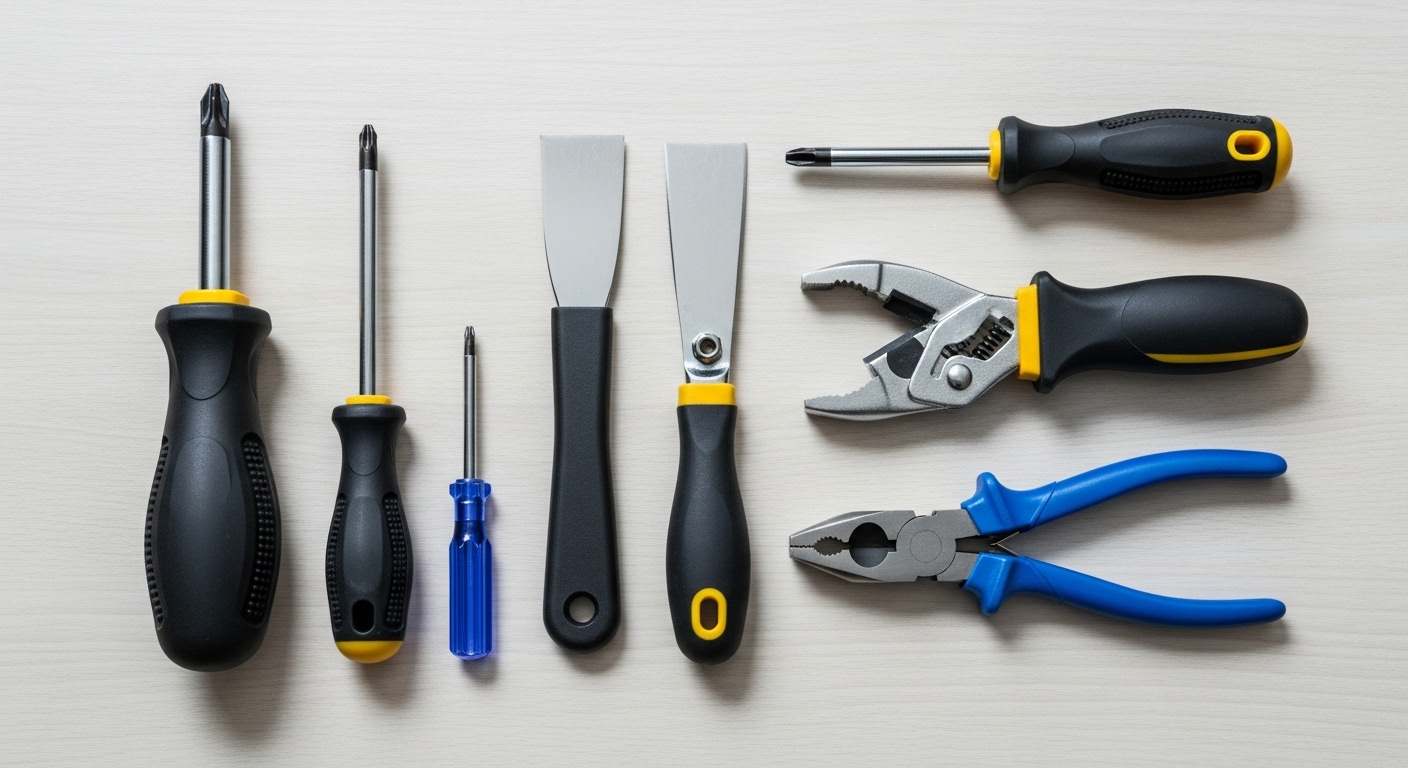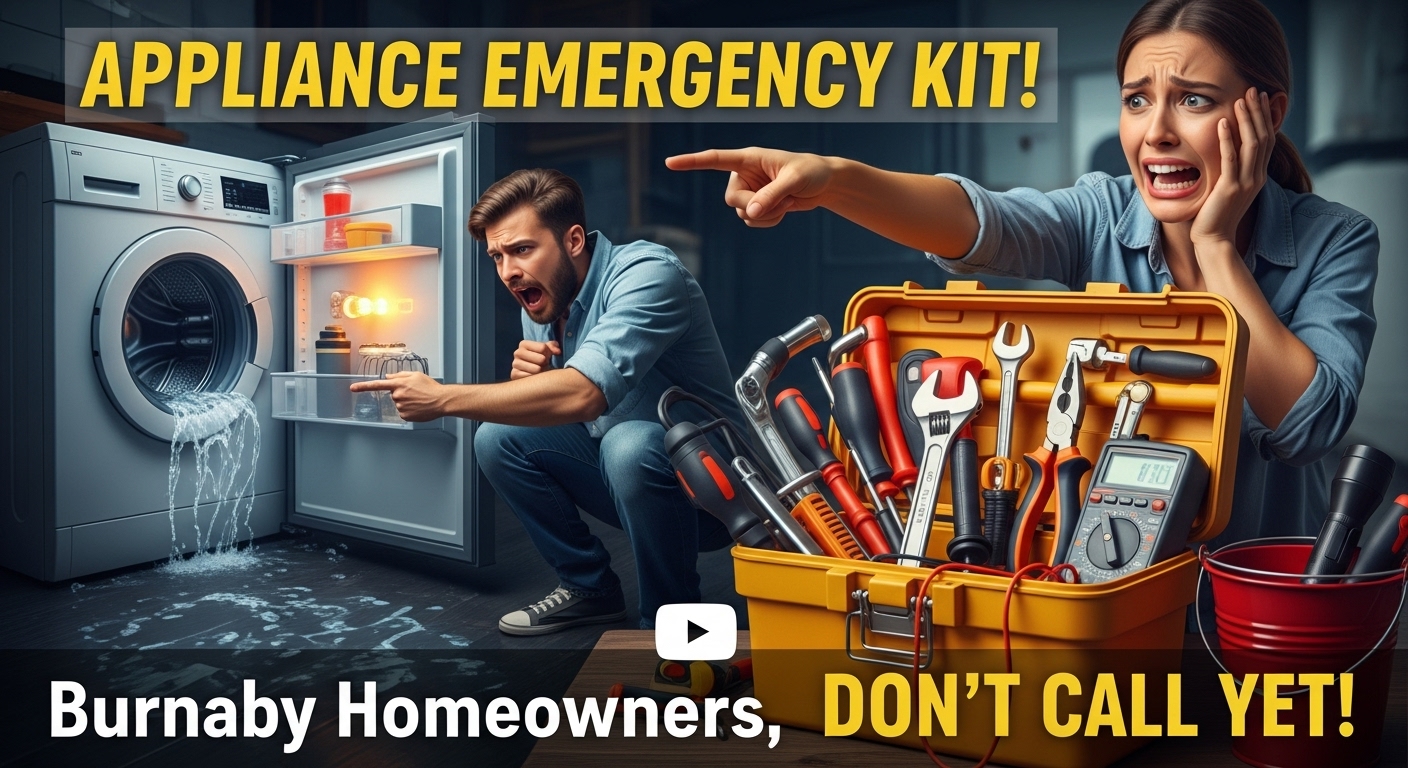Appliance Emergency Kit: Essential Tools Every Burnaby Homeowner Should Have Before Calling for Repair
Ever had your dishwasher flood the kitchen on a Sunday night or your dryer break down just as winter storms roll into Burnaby? Having the right appliance emergency kit can mean the difference between a quick fix and an expensive emergency service call that leaves you without essential appliances for days.
Picture this: it’s a typical rainy Tuesday evening in Burnaby when your washing machine starts making that dreaded grinding noise, and suddenly water is pooling on your laundry room floor. Your first instinct might be to panic and call for emergency appliance repair, but what if you could quickly diagnose the problem and implement a temporary fix yourself? This is exactly why every Burnaby homeowner needs a well-stocked appliance emergency kit.

Living in the Lower Mainland comes with unique challenges that make appliance preparedness even more critical. From winter power outages caused by storms to the ever-present earthquake risk, having the right tools and supplies can keep your household running smoothly when professional help isn’t immediately available. An appliance emergency kit isn’t just about saving money on service calls – it’s about maintaining your family’s comfort and safety during unexpected breakdowns.
The reality is that most appliance issues can be quickly diagnosed and temporarily resolved with just a handful of basic tools. Professional appliance technicians rely on the same fundamental equipment for the majority of their service calls, and homeowners can leverage this knowledge to create their own emergency response strategy. By understanding what tools to have on hand and when it’s safe to use them, you can transform from helpless homeowner to confident problem-solver.
Key Outtakes:
- Most appliance repairs can be diagnosed and temporarily fixed with just 3-4 basic tools that cost under $50 total
- Having the right emergency supplies can save homeowners hundreds of dollars in emergency service calls while providing immediate solutions
- Professional appliance technicians recommend homeowners keep specific tools for safety shutoffs and basic troubleshooting during emergencies
- Proper emergency preparedness includes both general emergency supplies and appliance-specific tools, especially important in earthquake-prone Burnaby
- Knowing when to attempt DIY fixes versus calling professionals can prevent dangerous situations and protect appliance warranties

Essential Hand Tools for Appliance Emergencies
Building an effective appliance emergency kit starts with understanding what professional technicians actually use in the field. The good news is that you don’t need an extensive workshop to handle most appliance emergencies – just a carefully selected set of essential hand tools that can tackle the majority of common issues. These tools form the foundation of your emergency response capability and should be easily accessible when disaster strikes.

The screwdriver set represents your most crucial investment, and Phillips head screwdrivers sporting the cross (+) are your primary repair tool. This is how you’ll remove most of the mounting screws both inside and outside of most appliances, from dishwasher panels to dryer drums. A quality set should include multiple sizes, with the most commonly used being the #2 Phillips head for larger screws and #1 for delicate components. Don’t overlook flathead screwdrivers either – they’re essential for prying apart clips and accessing certain screw types that still appear in older appliances.
Your second most important tool might surprise you: the humble putty knife. Professional repair technicians consistently rank this as their second-most-called-for tool in repairs, and for good reason. The putty knife excels at slipping under seams in appliance cabinets and releasing the small clips holding panels together. This non-destructive approach to accessing internal components can save you from accidentally damaging expensive plastic housings or breaking irreplaceable clips that hold everything together.
The 1/4-inch nut driver deserves a permanent spot in your emergency kit because, as professionals note, the vast majority of the time a nut driver is called for, it’ll be the 1/4 inch size. This specialized tool removes hex-headed screws that secure appliance panels and internal components, particularly common in newer appliances where manufacturers have moved away from traditional Phillips head screws. Without this tool, you’ll find yourself unable to access many modern appliance interiors safely.
Pliers complete your essential hand tool collection, but you’ll need two specific types. Needle-nose pliers excel at gripping small components and working in the tight spaces common inside appliances, while channel lock pliers provide the leverage needed for larger components and stubborn connections. You’ll most often use them to grip and steady small parts during removal, but they’re also invaluable for shaping wires and opening clasps that secure hoses and electrical connections.
Electrical Testing and Safety Equipment
Moving beyond basic hand tools, your appliance emergency kit must include electrical testing equipment to safely diagnose problems and prevent dangerous situations. Electrical issues cause a significant percentage of appliance failures, and having the right testing tools can mean the difference between a quick fix and a potentially hazardous situation. These tools not only help identify problems but also ensure your safety while working on powered appliances.

The multimeter stands as the most critical electrical tool in your emergency arsenal. This fundamental device measures voltage, current, and resistance, making it crucial for safely and effectively diagnosing issues with electrical components of appliances. Professional technicians consider the multimeter probably the most important thing you’ll ever need to buy for appliance work. Modern digital multimeters are surprisingly affordable and user-friendly, with clear displays that even novice users can read accurately.
Understanding how to use a multimeter safely can prevent dangerous mistakes during emergency repairs. Always test the device on a known working circuit before using it on your broken appliance, and never attempt to measure voltage while touching metal probes with bare hands. The multimeter allows you to verify whether electricity is reaching components like heating elements, motors, and control boards, helping you pinpoint exactly where the failure occurred.
Circuit testers represent a simpler but equally important safety tool for your emergency kit. These straightforward devices ensure electrical outlets are working correctly before plugging in an appliance, preventing potential damage from faulty electrical supply. Many appliance problems that appear complex actually stem from simple electrical supply issues that circuit testers can identify in seconds.
Wire cutters and strippers complete your electrical tool set, as many emergency repairs involve replacing damaged wiring or connections. Wire cutters handle copper, brass, aluminum, and steel wires commonly found in appliance wiring harnesses. High-quality wire strippers with clearly marked gauge indicators prevent damage to conductor wires while removing insulation, ensuring reliable electrical connections during emergency repairs.
Safety equipment cannot be overlooked when working with electrical appliances. Work gloves specifically rated for electrical work protect against cuts, burns, and electrical shocks that can occur during emergency repairs. Insulated tools with properly rated handles provide additional protection when working around live circuits, while safety glasses protect your eyes from debris and sparks that can occur when electrical components fail.
Emergency Supplies and Temporary Fixes
Beyond tools, your appliance emergency kit needs supplies that enable temporary repairs and safe shutdowns during critical situations. These materials bridge the gap between immediate emergency response and permanent professional repair, keeping your household functional while you arrange for proper service. The key is having versatile supplies that work across multiple appliance types and failure scenarios.
Duct tape and plastic sheeting have earned their reputation as emergency repair staples through dozens of practical applications. These materials excel at temporary sealing of leaking connections, securing loose panels, and protecting surrounding areas from water damage during appliance failures. Professional service technicians often carry these supplies because it’s impossible to predict what temporary fixes might be needed during emergency calls.
Electrical tape serves a more specialized but equally critical role in your emergency supplies. This insulating material safely secures electrical connections and provides temporary insulation for damaged wires, preventing shock hazards and short circuits during emergency situations. Thread seal tape, commonly called plumber’s tape, performs similar duties for water connections, providing leak-free seals on threaded joints that might need emergency disconnection and reconnection.
Your emergency kit should include basic replacement parts that commonly fail or get lost during repairs. Screws can get away from you by either falling behind a machine or rolling out of reach, leaving you unable to reassemble your appliance properly. A small container of common appliance screws, wire nuts, and basic connectors prevents minor missing parts from turning into major problems. Professional technicians always carry extras because appliance repairs often reveal additional damaged components that need immediate replacement.
Emergency power supplies become crucial
